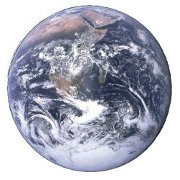
Custom Search
Animals in Juan de Nova Island
Between Mozambique and Madagascar in the Mozambique Channel of the Indian Ocean is a small, tropical island known as Juan de Nova Island. Its terrain is low and flat. Half of it is covered by forests of low shrub like plants. The island, consisting of sand and coral is fronted by large dangerous reefs that have become a graveyard to ships.
Except for a small military garrison and weather station, there is no permanent human population here. Instead, Juan de Nova is a wildlife sanctuary and serves as home to a host of animals. On the island are millions of seabirds. The guano or excrement from these seabirds measures several meters deep with up to 12,000 pound of it mined annually for fertilizer. Seabirds spend part of their lives in a marine habitat where they get their food and part in a terrestrial habitat where they breed.
Two species of terns are found on Juan de Nova: a very large population of Onychoprion fuscata or Sooty tern and a small population of Thalasseus bergii or crested tern. The Sooty tern measures 13-14 inches long with a 32-37 inch wingspan. It has dark gray upperparts, white underparts and black legs and bill. The Sooty tern feeds by picking fish from the surface. The Crested Tern has gray upperparts, white underparts, a yellow bill, and a shaggy black crest. Its young rely on their parents for several months after they have fledged. This bird feeds by plunge diving for fish. During the courtship ritual, the male will offer fish to the female.
Besides terns, there is an abundance of turtles on the island. One species, the green sea turtle (Chelonia mydas) has a flattened body covered by a large, teardrop-shaped carapace and a pair of large, paddle-like flippers. It's herbivorous, feeding mostly on seagrass. The females of this species dig nests on beaches and lay eggs at night. When the hatchlings emerge, they walk into the water. A second species, the hawksbill turtle (Eretmochelys imbricate) is similar in that it also has a sharp, curved beak and saw-like appearance of its shell margins. Its primary prey is sea sponges and other invertebrates. Unfortunately, both these unique species of turtles found on Juan de Nova Island are on endangered lists and need to be protected.
Except for a small military garrison and weather station, there is no permanent human population here. Instead, Juan de Nova is a wildlife sanctuary and serves as home to a host of animals. On the island are millions of seabirds. The guano or excrement from these seabirds measures several meters deep with up to 12,000 pound of it mined annually for fertilizer. Seabirds spend part of their lives in a marine habitat where they get their food and part in a terrestrial habitat where they breed.
Two species of terns are found on Juan de Nova: a very large population of Onychoprion fuscata or Sooty tern and a small population of Thalasseus bergii or crested tern. The Sooty tern measures 13-14 inches long with a 32-37 inch wingspan. It has dark gray upperparts, white underparts and black legs and bill. The Sooty tern feeds by picking fish from the surface. The Crested Tern has gray upperparts, white underparts, a yellow bill, and a shaggy black crest. Its young rely on their parents for several months after they have fledged. This bird feeds by plunge diving for fish. During the courtship ritual, the male will offer fish to the female.
Besides terns, there is an abundance of turtles on the island. One species, the green sea turtle (Chelonia mydas) has a flattened body covered by a large, teardrop-shaped carapace and a pair of large, paddle-like flippers. It's herbivorous, feeding mostly on seagrass. The females of this species dig nests on beaches and lay eggs at night. When the hatchlings emerge, they walk into the water. A second species, the hawksbill turtle (Eretmochelys imbricate) is similar in that it also has a sharp, curved beak and saw-like appearance of its shell margins. Its primary prey is sea sponges and other invertebrates. Unfortunately, both these unique species of turtles found on Juan de Nova Island are on endangered lists and need to be protected.
 Information about the animals living in Juan de Nova Island is brought to you by "List of countries of the world", your first stop in discovering all countries and animals of the world.
Information about the animals living in Juan de Nova Island is brought to you by "List of countries of the world", your first stop in discovering all countries and animals of the world.The animals displayed on this page are grouped in their scientific order. View also countries of the world ordered by:
- List of TLD's
- Country dialling codes
- Population
- Kilometers of coastline
- Square kilometers of land
- Square kilometers of water
- Birth rate
- Death rate
- Irrigated land
- Countries starting with A
Privacy policy